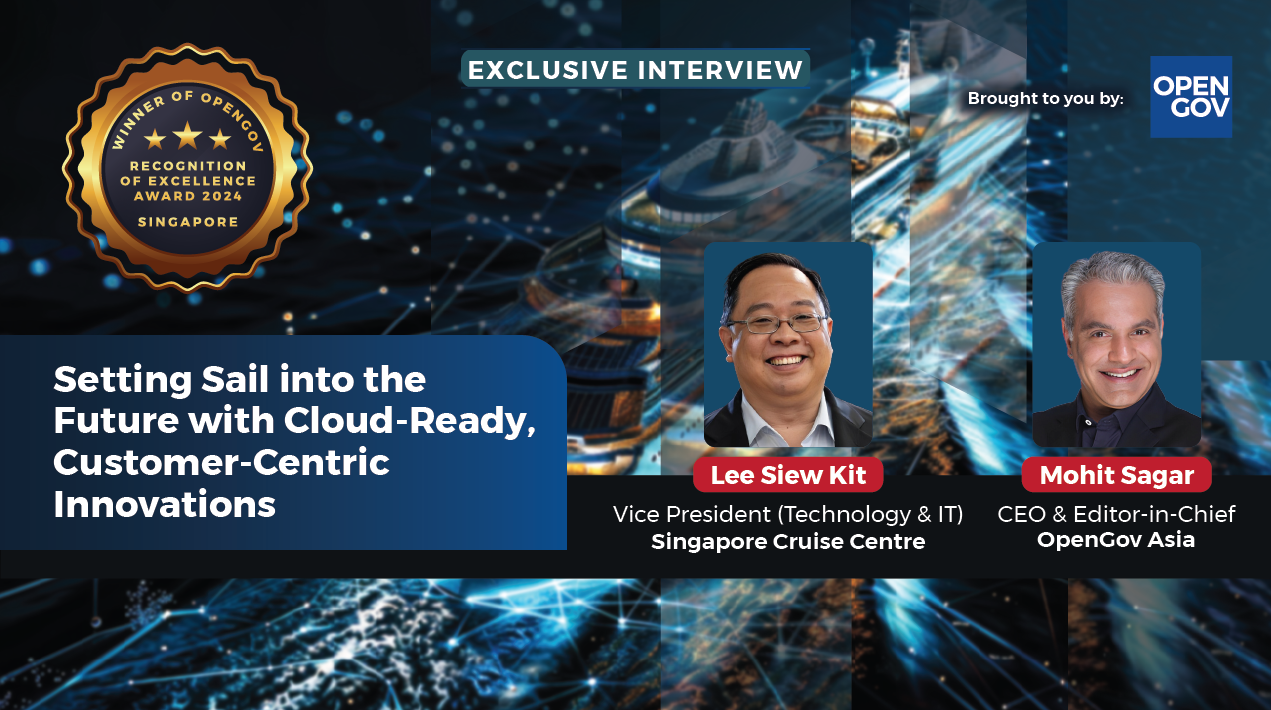
This is Part 2 of a two-part series. Read Part 1.
 OpenGov Asia had the opportunity to speak exclusively to Simon Dale, Managing Director, South East Asia at Adobe. For over 30 years, Simon has worked for and with innovative tech companies across Europe and in the Asia Pacific and Japan, mostly in sales leadership roles. He specialises in launching and growing new businesses in the enterprise software space.
OpenGov Asia had the opportunity to speak exclusively to Simon Dale, Managing Director, South East Asia at Adobe. For over 30 years, Simon has worked for and with innovative tech companies across Europe and in the Asia Pacific and Japan, mostly in sales leadership roles. He specialises in launching and growing new businesses in the enterprise software space.
While the use of technology in the public sector is not new, it is becoming increasingly more important to adopt a more citizen-centric outlook. Simon feels that agencies need to be willing to directly serve citizens and engage with them in real-time. This requires a paradigm shift in thinking followed by a strategy that would enable it.
Adobe’s digital transformation is a great example. A decade ago, Adobe used to sell software (in the form of packaged discs) to distributors who then sold it to the customers. Today, Adobe’s customers can go to the company’s website, purchase the product and download the software directly onto their device. To facilitate this, Adobe had to change its thinking, develop a strategy and set up infrastructure and systems.
Simon encourages governments to understand the importance of citizen experience – which is far different from customer experience. Government agencies need to manage citizen experience from the viewpoint of a life journey broken up into specific stages, organising its content and channels to align appropriately. Such a design can only be built on understanding – when governments recognise what each citizen needs at a particular stage or season of life. Adobe’s 2021 Public Sector Trends Report shows that empathy is essential in designing and implementing truly citizen-centric services.
Adobe has a five-stage customer journey: discover, try, buy, use and renew. When customers first visit Adobe’s website, the company has limited information. Each time a customer returns to their site, explores and/or uses Adobe’s products, a bigger and more comprehensive picture and understanding emerge. For the most part, big data analytics can be used to evaluate data to enable personalisation, but Artificial Intelligence (AI) can accelerate this process.
Fundamentally, when citizens engage with the government in the digital space, they want relevant content and an easier experience. Agencies need to anticipate citizens’ needs and respond with suitable content, send out more timely and relevant information, as well as smoothen the experience on their digital platforms. Adobe is placed perfectly to help with this.
Throughout the pandemic, Adobe worked with both the U.S. and the Australian governments to accelerate communications on the status of the COVID-19 outbreak, critical updates and information, measures in place. This was vital in managing government response during the pandemic and easing concerns that were escalating and managing expectations.
The accelerated adoption of new technologies to improve digital customer experience (CX) has been made possible due to strong public-private partnerships. Amazingly, Adobe has partnered with all 50 U.S. states to power their digital modernisation through Adobe Experience Cloud and Adobe Document Cloud. The partnerships exist across individual agencies at the state, county and city levels.
Great examples are Adobe’s work with the U.S. Census Bureau and the Centres for Disease Control and Prevention (CDC), in terms of content management. The Census Bureau employed Adobe’s Experience Manager to build a digital foundation for the online census. Similarly, Adobe partnered with the CDC to orchestrate multi-channel communications to millions of citizens with up-to-date information about the COVID-19 emergency.
Citizen expectations are hugely influenced by the retail and financial sectors. The ease of business that encompasses many options and easy transactions are what people now demand. Simon believes that an “add-to-basket” experience is possible in some areas of public services.
Accelerated by the pandemic, governments have had to deliver some services without physical contact. If they build on this, citizens should be able to pick up certain services and drop them in a ‘check-out basket’. Services related to things like renewing a driver’s license, applying for a marriage license or getting copies of various certificates are all in the realm of possibility.
Using platforms like Adobe Experience Cloud, governments across the globe are revamping their online presence, making their websites and apps easier to navigate, ensuring content is personalised and updated in real-time, and creating intuitive forms that work on any device. Adobe Document Cloud helps optimise internal document workflows and Adobe Sign powers the entire e-signature process, reducing time spent on tasks such as applying for benefits and drastically reducing paper waste.
This is because Adobe is not just a provider of a piece of technology, but a long-term partner for business applications with values built on technology. Adobe’s perspective allows governments to get into citizen experience best practices immediately rather than building technologies from scratch or spending money on technologies that will not be valuable. Government agencies can focus on their tasks and adopt technology that is going to accelerate their digitalisation.
The concept of democratising digital decision-making for the public sector is vital to long term development. Data democratisation does not mean everyone has access to all data. The idea is to provide access to information that decision-makers need that is relevant to the level at which they operate that is constrained by the sensitivity and the use of data.
The fact is, the public sector collects vast amounts of information on citizens, but they have to be careful who has access to it. Agencies get data about people from their websites which include what they are looking for, what services they have availed of and issues or concerns they have. Every government employee who influences or decides those interactions and that content should have access to that citizen information, bound by the right level of privacy compliance and data protection.
It can help them rethink, reimagine and redesign the content they put up, how they can improve and what they need to do to better serve their citizens. Democratisation in this context means giving everybody who is contributing to “the last mile” more access to the information they need, so they can understand where they fit into the process.
It is analogous to conversion and retention in marketing, which, Simon believes, provides an argument for more government officers to have access to the right level of data. Better information allows faster conversion and better retention of customers, in this case, citizens. Richer data sets being made available to them, allows them to improve the citizen journey.
That being said, data democratisation has to be managed by robust data governance, compliance policies and security measures. Adobe takes safety and regulatory adherence seriously. It can take data that is garnered from citizen interactions – anonymous and authenticated – and use applications to allow decision-makers to analyse that data for various purposes.
Simon is confident in Adobe’s ability to better the world through its digital offerings that can meet the vast and growing needs of the public sector. Designed for easy deployment, compliance and management, Adobe tools, apps and services can be tailored to the specific needs of individual departments.
He firmly believes that digital insights have no value if they are not actionable. Systems, solutions and technology have to drive decisions that improve the lives of citizens through all digital services. Simon is optimistic that technology will continue to drive the quality of life and digital experiences of citizens across the world.
This is Part 2 of a two-part series. Read Part 1.

















